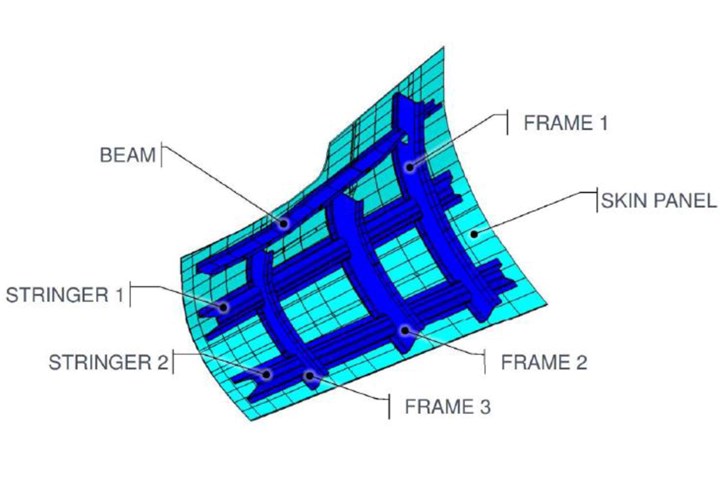FRAMES: Full-scale thermoplastic composite aircraft rear-end demonstrator
Clean Sky 2 project led by ESTIA-Compositadour will develop enabling technologies for optimum rear fuselage and empennage.
Share
Read Next

Thermoplastic composite Advanced Rear End (ARE) demonstrator for Clean Sky 2. Photo Credit: ESTIA-Compositadour
FRAMES: A new research project focused on thermoplastic manufacturing solutions for complex geometries. A consortium of European companies initiated by ESTIA-Compositadour (Bayonne, France) is joining forces to develop advanced knowledge and manufacturing solutions for a full-scale thermoplastic aircraft rear end demonstrator.
The fuselage of the next generation of large passenger aircraft could exploit the benefits of thermoplastic composites (TPCs) — including increased toughness, recyclability and faster production cycles — to meet future aviation sector challenges.
Because they contribute lighter aircraft and reduced fuel consumption, these materials are gaining increasing acceptance in aerospace. However, there are still issues overcome. The manufacturing of complex-geometry structures comprising the rear end section of the aircraft with continuous fiber-reinforced TPC still poses a considerable challenge: high processing temperatures, raw material costs, complex temperature-controlled tooling and changing cross-sections.
To support a Clean Sky 2 initiative focused on developing concepts and enabling technologies for an optimum rear fuselage and empennage, ESTIA-Compositadour initiated a European consortium with Heraeus Noblelight Ltd. (U.K.), Xelis (Markdorf, Germany) and Cero (Challans, France) into the 2.5-year applied research project FRAMES: Fiber-reinforced thermoplastics manufacturing for stiffened, complex, double-curved structures.
FRAMES' main objective is to validate and assess a manufacturing approach for an integral thermoplastic rear end with critical design features. Key technologies developed within FRAMES will be used into a mid-scale advanced rear end (ARE) demonstrator manufactured by the Deutsches Zentrum für Luft- und Raumfahrt (DLR, German Aerospace Center), part of a Clean Sky 2 technology platform for large passenger aircraft (LPA).
By combining their forces and knowledge, this consortium will bring reliable and competitive industrial solutions for intelligent heating systems for automated layup, efficient production processes for stiffeners and advanced heated tooling. Three work packages will support these key technologies:
- Heraeus Noblelight will lead the development of a combined optical-thermal simulation model for automated fiber placement (AFP) with a xenon heating device such as humm3, enabling fast skin layup.
- Xelis will develop a robust manufacturing process for complex thermoplastic stiffeners with a proven high-rate capability.
- Cero will take charge of delivering a self-heated tooling solution enabling co-consolidation of skin and stiffeners in one shot.
ESTIA-Compositadour will lead the FRAMES project, perform fiber placement trials and support DLR during manufacturing and delivery of the ARE demonstrator.
FRAMES was initiated at the end of July 2020 and will publish regular updates on its progress. For more information, contact Guillaume Fourage, g.fourage@estia.fr
Related Content
-
Developing repairs for thermoplastic composite aerostructures
HyPatchRepair project proves feasibility of automated process chain for welded thermoplastic composite patch repairs.
-
PEEK vs. PEKK vs. PAEK and continuous compression molding
Suppliers of thermoplastics and carbon fiber chime in regarding PEEK vs. PEKK, and now PAEK, as well as in-situ consolidation — the supply chain for thermoplastic tape composites continues to evolve.
-
Plant tour: Airbus, Illescas, Spain
Airbus’ Illescas facility, featuring highly automated composites processes for the A350 lower wing cover and one-piece Section 19 fuselage barrels, works toward production ramp-ups and next-generation aircraft.
















